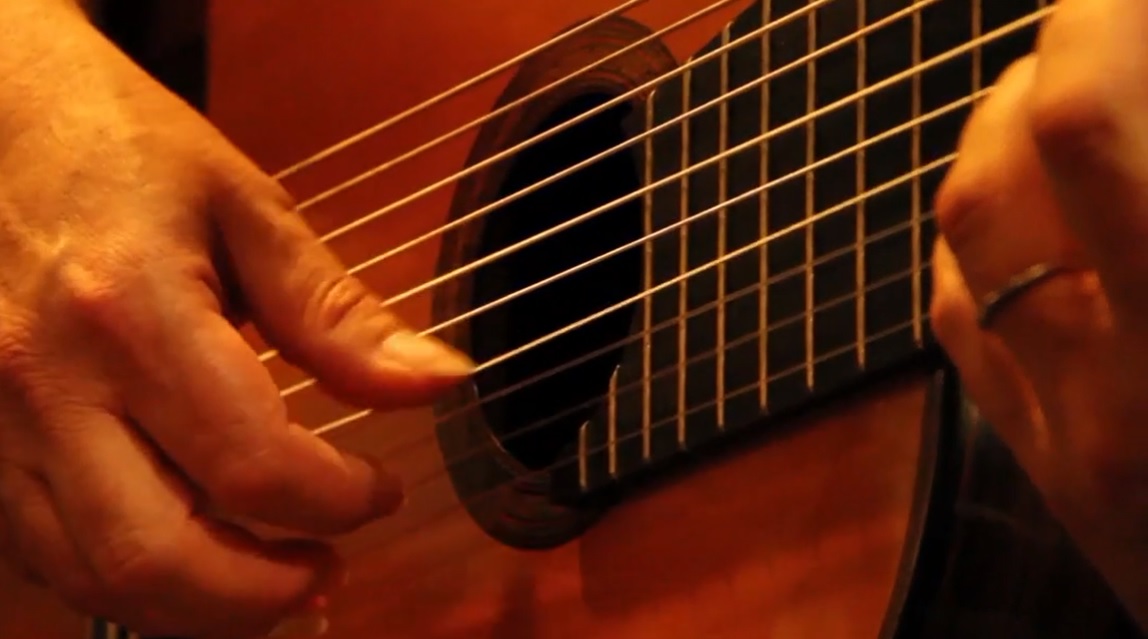



The
ten-string guitar is a laboratory of sounds
and colors refracted by the instrument's
unusual acoustical qualities.
This guitar has its ten
strings mounted on the fingerboard, which
allows the sound to increase remarkably due
to the duplication of sounds and the
harmonics generated by the four additional
strings.
The width of the fingerboard brings the fingers closer to the neck, making the bow of the left hand smaller and facilitating speed and slurs.
The advantage is that the works originally
written for lute or ancient guitar can be
performed without any previous trancription.
As regards the contemporary
music field, this guitar offers a great
number of possibilities, since it counts
with a wider range of sounds and technical
resources.
There is no rule as to whether to start from the beginning with this instrument or to wait years before adopting it, because the time to start depends on the sensitivity of each person.

1828 - Fernando Carulli uses a guitar of ten-string guitar with an extension in the neck without a frets for the four additionals strings.
It was built by the luthier RenÚ Lacote and
registered in Paris in 1861. Carulli composed his method
Op.293 for the ten-string guitar.
1960 - The Spanish luthier Jose Ramirez III, dedicated a lot of study to the construction of guitars with the purpose of solving the physical acoustic problems of the instrument and of extending its sound. He contacted Narciso Yepes with whom he created the idea of adding more strings to the instrument.
1964 - The first modern ten-string guitar was born. That same year, Narciso Yepes performed for the first time with a ten-string guitar playing the Aranjuez Concert with the Berlin Philharmonic.
The tuning of the first six strings is the same as that of the six-string guitar.
Yepes's tuning:
E B G D A E C Bb Ab Gb
These tones provide harmonic vibration to
extend the resonance of each note on the fingerboard of the guitar.
Controlling and using the resonance at will, and not that of the instrument, is an important artistic goal. By applying the lower part of the right wrist across the bass strings, undesirable resonance can be muted.
Over time, this becomes an automatic aspect of the technique, according to the demands of the piece being played.
Resonance can also be blocked with the left hand, an idea that is transferred from the six-string guitar.
As far as resonance is concerned, it is important to realize that the extra bass strings are constantly being used, because this is the physical principle that gives the ten-string guitar its distinctive quality as a characteristic.
As time goes by the power of its volume becomes more and more evident.
With each performance we learn to polish and use the qualities of the more sustained notes and the greater volume achieved by the ever-present harmonic vibrations.